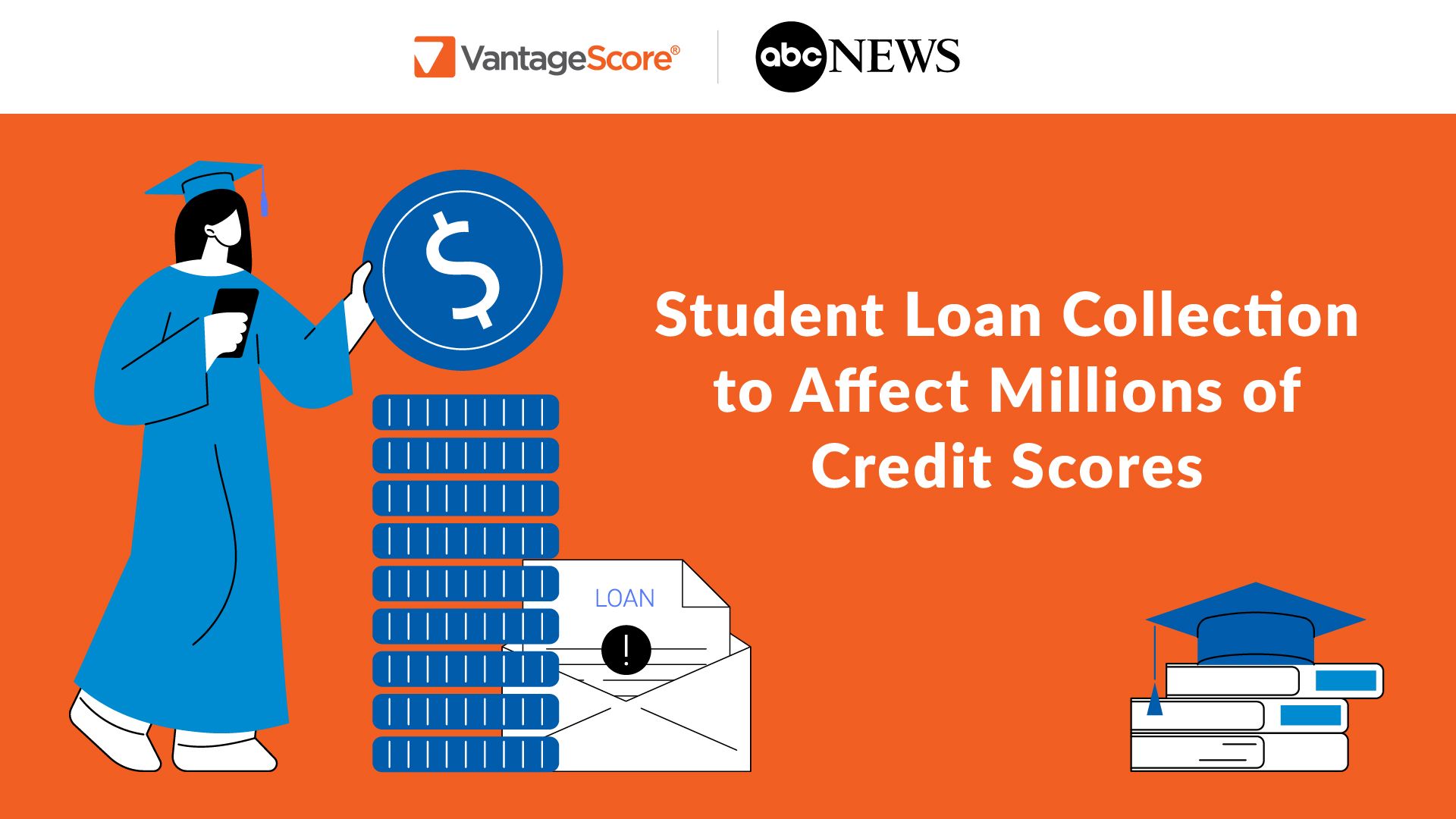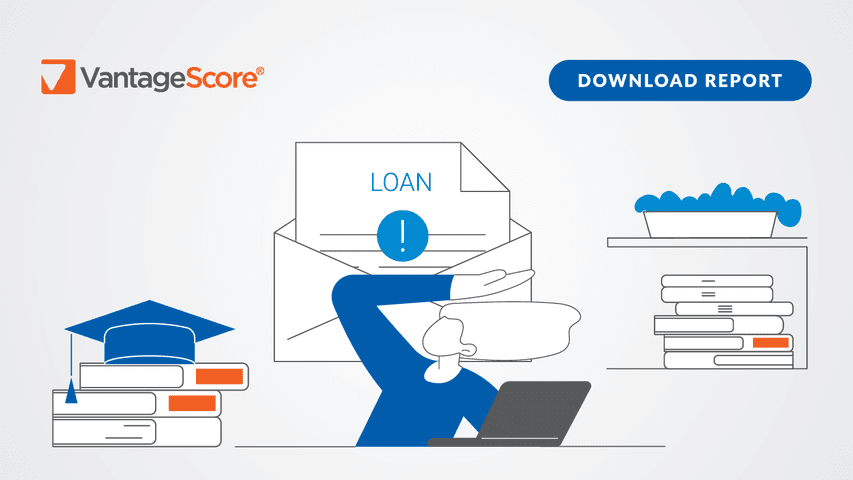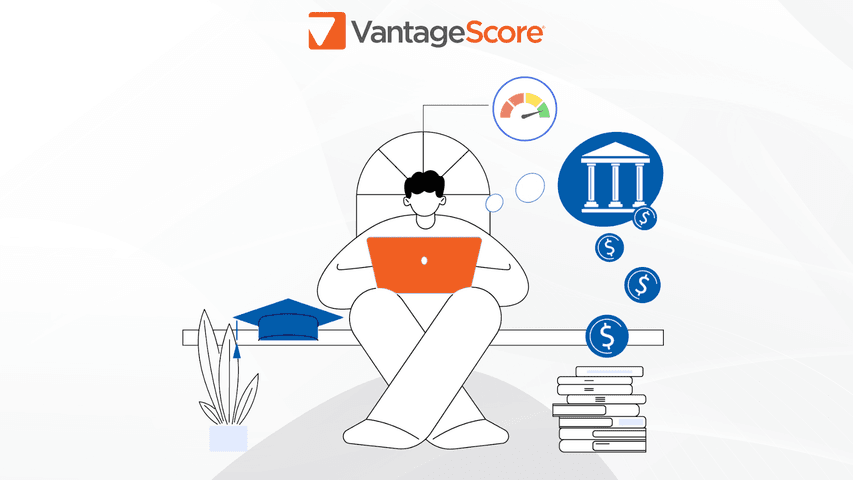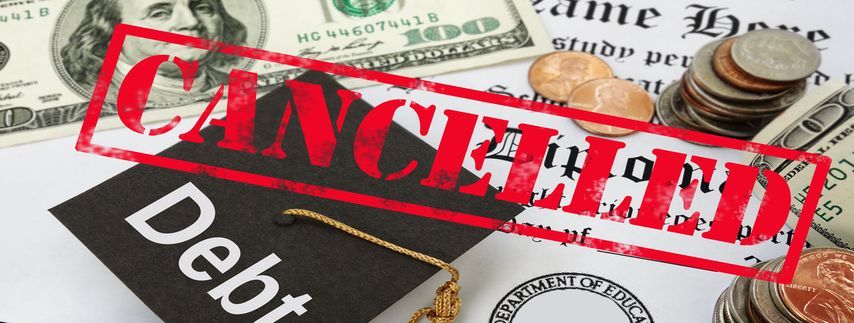Let us know who you are
Navigating the world of student loan repayment can be a complex and sometimes overwhelming journey. Whether you're a current borrower seeking guidance on repayment or simply looking for the latest updates in the realm of student loan policies and relief measures, you've come to the right place.
At VantageScore, we're dedicated to providing you with a comprehensive and user-friendly platform to help you navigate all your student loan repayment related needs. Our mission is to empower you with the knowledge and resources that will help you make informed decisions about your education and financial future.
VantageScore has always provided educational resources to help consumers maintain a healthy credit file and credit score.
Consumers with federal student loans face a complex and fast changing environment. VantageScore partnered with Dan Currell (of the Digital Commerce Alliance) to bring these consumers clarity so they can maintain their creditworthiness as they navigate the best option for their financial situation.

In The News
May 2, 2025Student Loan Collection to Affect Millions of Credit Scores - VantageScore on ABC News

Credit Industry News Regulations Trends
February 27, 2025VantageScore® Analysis Finds Benefits for Borrowers Who Resume Student Loan Payments, While Many Will See Lower Credit Scores

Student Loans
October 16, 2024Protect Your Credit Score: Know the Impact of Student Loan Delinquencies

Credit Cards And Loans
November 14, 2023Navigating Federal and Private Student Loans: Understanding Options for Different Borrowers

Lending Industry News Regulations Trends
October 12, 2023Understanding the Economic and Social Impact of Student Loans

Student Loans
October 11, 2023Student Loan Forgiveness News: Unpacking the $9 Billion Debt Cancellation and Other Paths to Relief
We understand that managing federal student loan repayment requires careful planning and thoughtful strategies. Our educational resources include links to loan servicer websites, budgeting tips, information on loan forgiveness programs, and educational materials to enhance your financial literacy.
Federal Student Loan Repayment
"Fresh Start" Program Info
Student Loan Terms & Lingo
Frequently Asked Questions
Curious about the basics of federal student loan repayment programs? Wondering when you'll need to start repaying and what types of payment plans are available? Our FAQ section covers common questions and more, offering clear and concise answers to help demystify the world of student borrowing.
The Department of Education (ED) still might be able to forgive loans on the basis of the Higher Education Act. An ED official explains what they hope to accomplish in this video.
Some people were eligible for loan forgiveness under Public Service Loan Forgiveness (PSLF) or the Borrower Defense rule but had not had their loans forgiven yet. The administration has reassessed these programs and some borrowers have had part, or all, of their loans forgiven. (Biden-Harris Administration to Provide Borrowers with Loan Forgiveness as Result of Fixes to Income Income-Driven Repayment Plans)
In June of 2023, the Supreme Court made its ruling on student debt relief, blocking the Biden-Harris Student Loan Debt Relief Plan that would have provided up to $10,000 (and up to $20,000 for Pell Grant recipients) in loan forgiveness for each federal student loan borrower whose individual income was below $125,000 or household income was below $250,000.
The Biden administration has announced three actions on student debt relief and loan repayment after the Supreme Court decision:
- A new debt relief program based on a different statute has been proposed. This involves a rulemaking process that normally takes a year or more, and it may be challenged in court.
- Saving on a Valuable Education (SAVE), a new income income-driven repayment (IDR) option that allows most borrowers to pay less each month, and some to pay nothing. SAVE replaces REPAYE, one of four existing IDR plans.
- 12-month “on-ramp” to repayment during which missed payments are not considered delinquent or reported to credit bureaus. Borrowers who can make payments should do so, as payments will be due and interest will accrue during this on-ramp period. At the time of publication, information about the 12-month on-ramp is limited, but we expect updates from Federal Student Aid (FSA) and the Department of Education in the coming months.
Start by reading the Federal Student Aid’s guide to preparing for loan repayment. Your payment will go through a loan servicer. To find out who your servicer is, log in to your Federal Student Aid account. You can also call the Federal Student Aid Information Center at 1-800-433-3243. Loan servicers should contact borrowers before student loan payments resume in September-October.
The Department of Education has a loan simulator to help you calculate student loan payments and compare different repayment options.
Your payments are likely to be the same as before unless you’ve taken steps to change them, such as enrolling in an income-driven repayment plan. You can log in to your Federal Student Aid account to find out what your payment will be.
Interest on federal student loans will begin to accrue again on September 1, 2023. Loan payments will resume in October, 2023.
- Consolidation could lower your monthly payment by providing access to additional income-driven repayment plans or by giving you more time to repay your loan
- Fixed interest rate
- Consolidating loans is necessary to qualify for the income-contingent repayment plan if you have a Parent PLUS loan.
Most borrowers have a series of different loans disbursed at different times, often at different interest rates. Consolidation loans allow borrowers to combine one or more federal education loans into a single loan with a single payment.
The Extended Repayment Plan allows borrowers to extend their repayment, for example, from ten years to twenty.
The Department of Education has a loan simulator to compare repayment options. However, Parent PLUS borrowers must use Income-Contingent Repayment, described in the “Parent Borrowers*” section below.
- While your monthly payment may go down, you may have to pay longer, increasing your total interest
- Consolidating student loans can in some cases make it harder to access income-driven repayment plans like SAVE or loan forgiveness programs like Public Service Loan Forgiveness.
- Consolidating student loans with a private lender will generally render those loans ineligible for forgiveness and alternative repayment plans.
Choosing the right plan is very important, as the wrong choice can cost thousands of dollars and years of lost credit towards forgiveness. As with so many areas of student loans, there’s no substitute for reading the fine print.
Existing Income-Driven Repayment options are described at this link, they include:
- Saving on A Valuable Education (SAVE) Plan – formerly Revised Pay As You Earn (REPAYE)
- Pay As You Earn (PAYE)
- Income Based Repayment (IBR)
- Income Contingent Repayment (ICR)
Borrowers currently enrolled in REPAYE will automatically be enrolled in SAVE, but borrowers in other IDR plans will need to login and request enrollment in SAVE if they are eligible.
An income-driven repayment plan sets your monthly student loan payment to a percentage of your discretionary income. The amount is intended to be affordable based on your income and family size. This increases the amount of time it takes to pay off the loan. However, some IDR programs – particularly the SAVE plan – allow unpaid balances to be forgiven after a period of years in which the plan’s payment requirements are met.
There are two main options for qualified borrowers: deferment and forbearance. In deferment, accumulated interest is added to the loan principal, or “capitalized.” Forbearance is like deferment, but the interest does not capitalize. Forbearance can be slightly better for borrowers, but it’s only available under certain circumstances.
The Department of Education created the Fresh Start program to enable defaulted borrowers to restore their repayment status and have access to other federal student aid benefits and protections restored. The Fresh Start program is expected to have a positive impact on defaulted borrowers’ credit scores.
In most cases, your student loans will still be due. For over 30 years it has been all but impossible to have them discharged or forgiven in bankruptcy. Late in 2022, the Biden administration announced an effort to make it more feasible to have student loans discharged in bankruptcy. As of September 2023, the law hasn’t changed, so it still won’t be easy to get rid of student loans in bankruptcy.
Student loans are generally in default after nine months of non-payment. Default is very harmful – the full balance of principal and interest is immediately due (this is called “acceleration”); the default is reported to credit bureaus and hurts the borrower’s credit score; the borrower loses eligibility for deferment and forbearance; the borrower loses eligibility for further federal student aid; and the borrower may experience tax and wage garnishment and legal collection actions.
Your payment is delinquent when it arrives one or more days past its due date. Delinquencies of 90 days or more are generally reported to the three credit bureaus (Equifax, TransUnion and Experian), which hold the data used by FICO and VantageScore to calculate your credit score. That said, the Department of Education plans to implement a 12-month “on-ramp” to repayment during which delinquent payments will not be reported to credit bureaus.
To the extent that paying off your student loan lowers your total debt, paying off your student debt in full can have positive impacts on your credit score.
Yes, student loan debt does affect your VantageScore credit score. The loan is factored in a number of ways including your overall total debt, and your payment history. Consistent, on-time payments can actually help your score increase while missing payments can have negative impacts on your credit score. As you pay down your student loan, your total debt declines, and you are likely to see your score improve.
Federal student loans charge an origination fee. As of 2023:
- Federal student loan origination fees are around 1%
- Parent and graduate PLUS loans have an origination fee of around 4%
- Private and state loan origination fees vary
Interest rates for new loans range from 5.50% to 8.05% in 2023-24.
- Rates are fixed for the life of federal student loans unless the loan is refinanced or consolidated
- Interest rates are determined by a formula in the Higher Education Act
- Private or state student loans can sometimes offer lower interest rates and/or lower origination fees but do not generally have income-driven repayment or forgiveness options
Private loans are market-driven, so how much you can borrow and on what terms is up to the lender.
- Private loans are very unlikely to be forgiven and generally do not have forbearance or income-driven repayment options.
- Depending on the loan origination fee and interest rate, at times, private loans can be cheaper than federal loans.
- This federal and private student loans comparison chart reviews some of the characteristics of and differences between private and federal loans
According to the Federal Student Aid 2023-24 Handbook:
- Undergraduates who are dependents of their parents can borrow $5,500 for their first year, $6,500 for their second year, and $7,500 for each of their third, fourth and fifth years, with an aggregate loan limit or total borrowing maximum of $31,000.
- Undergraduates who are independent from their parents can borrow $9,500, $10,500 and $12,500 for those years, up to a maximum of $57,500. (Note: getting classified as independent for these purposes is very hard to do before the age of 24.)
Graduate students can borrow up to $20,500 per year in direct loans up to a total of $138,500 including undergraduate debt.
Additionally, you can borrow up to the school’s Cost of Attendance with a Direct PLUS loan.
Yes, federal loans of this kind are called Parent Loan for Undergraduate Students, or PLUS loans. There are also private loan options for parents, and some states have parent loans.
Parent borrowing is unlimited and not means-tested, under the Direct PLUS program. However, the loan cannot exceed the school’s Cost of Attendance minus existing financial aid. In 2023-24, PLUS loans have a 4% origination fee and an 8.05% fixed annual interest rate.
Parent PLUS loans are not eligible for income-driven repayment plans, as explained by the Department of Education here. A parent borrower may be eligible for income-contingent repayment (ICR) and potentially Public Service Loan Forgiveness (PSLF) after the PLUS loan has been consolidated into a Direct Loan.
Maybe. Here are a few of the possibilities:
- The New Biden-Harris Debt Relief Plan. Details are TBD and will take over a year to develop because it needs to go through negotiated rulemaking. It will be very surprising if the new debt relief plan is not challenged in court.
- Saving on A Valuable Education (SAVE). The current version of SAVE reduces monthly payments and may result in some forgiveness for borrowers. More provisions of SAVE may be implemented in July 2024, which could further reduce or eliminate some payments.
- Public Service Loan Forgiveness (PSLF). Borrowers working in certain public and nonprofit jobs may qualify for student loan forgiveness after a period of repayment. Many loan balances have recently been forgiven under this program. These resources can be used to assess whether a borrower is eligible.
- Teacher Loan Forgiveness (TLF). Some teachers may be eligible for debt relief under this program.
- Teacher Education Assistance for College and Higher Education (TEACH) Grants. This program provides grants to those who qualify and fulfill a teaching service obligation, generally for four years. If a TEACH grant recipient doesn’t fulfill those requirements, the grant converts to a loan that must be repaid with interest. Aspiring teachers can apply for a TEACH grant of up to $3,772 per year.
- Borrower Defense to Repayment. Borrowers who went to a for-profit college and were misled or defrauded by that college may be eligible for debt relief.
A loan servicer is a company assigned by the Department of Education to handle the billing and other services on federal student loans, such as income-driven repayment plans and loan consolidation. People sometimes refer to servicers as lenders, but that’s usually wrong: the government is the lender, and the servicer is collecting payments on the government’s behalf.
Loan entrance counseling ensures you understand the terms and conditions of your loan, including your rights and responsibilities. All federal student loan borrowers must complete loan counseling to inform them about how their loans work.
FAFSA is the main form students and families fill out to apply for federal student loans and grants.